Lighting in the toilet: types and location
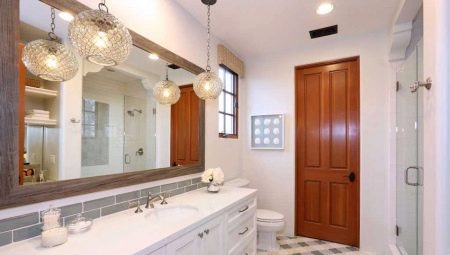
Each person, when decorating his home, pays special attention to the toilet room. Lighting plays an important role here. Today we will talk about how to properly organize it in the bathroom.
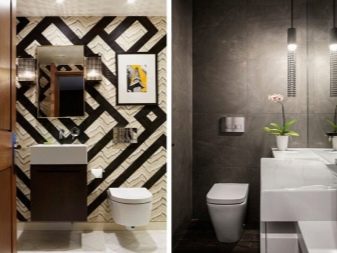
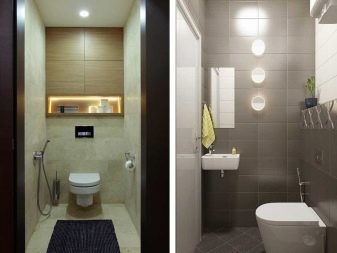
Peculiarities
The organization of lighting in the toilet is of great importance in the design of the room, because there are completely no windows here and natural light does not penetrate. Even in the daytime, the bathroom will be gloomy and dark.
The choice of suitable luminaires for such a room should be carried out taking into account the materials for finishing the walls, ceiling and floor. And also it is worth focusing on the dimensions of the room.
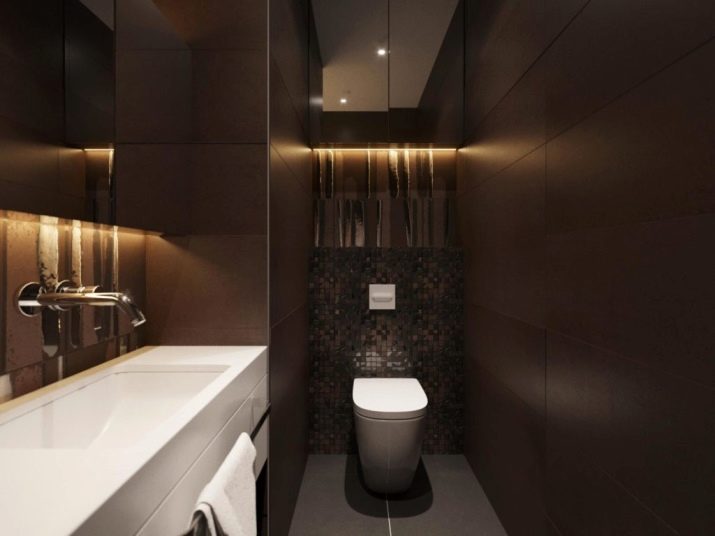
Sources of light
Nowadays there is a huge variety of light sources that can be used to illuminate the washroom.
Incandescent lamps
The most traditional and well-known bulbs. They necessarily have a special spiral, which is most often made of tungsten. The power indicator of such lamps can vary from 15 to 1000 watts. In latrines, it is better to use models with a power of no more than 40 watts.
Incandescent lamps have a relatively low cost. They are small in size, but the level of brightness is too high, which can negatively affect human vision. In addition, this variety has a short service life.
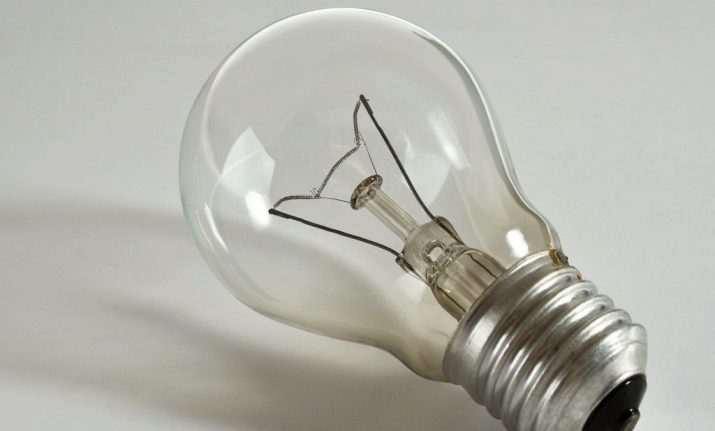
Halogen
These lighting devices are distinguished by their special compactness, luminescence efficiency and a high level of moisture resistance. Halogen light sources have minimal power consumption during operation.
Such lamps are quite expensive. But at the same time they will be able to serve for a long time.
Halogen elements can be built-in (mounted in suspended ceilings) or open.
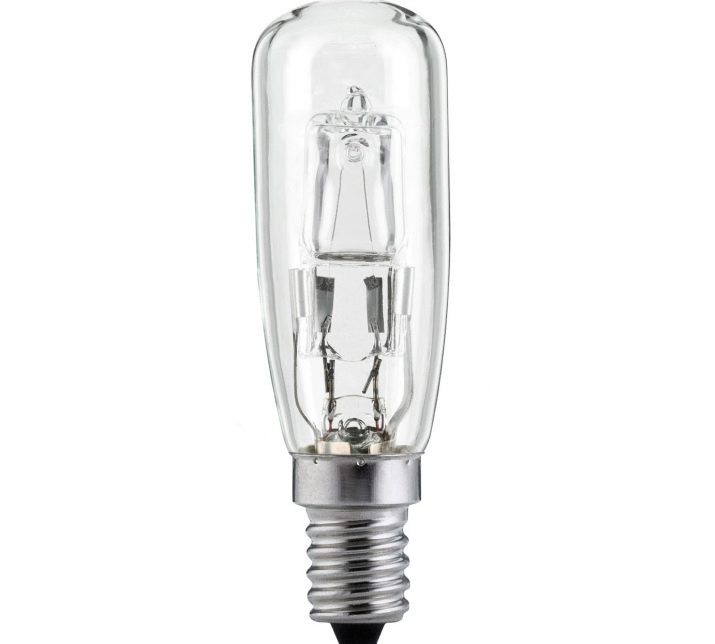
Energy saving (fluorescent)
These devices have special flasks filled with mercury vapor. When the device is turned on, under the influence of electrical discharges, a glow occurs. Despite the presence of toxic substances, energy saving lamps are a safe option for organizing lighting in the washroom.
Such devices differ special durability. They also have increased light output and light temperature threshold.
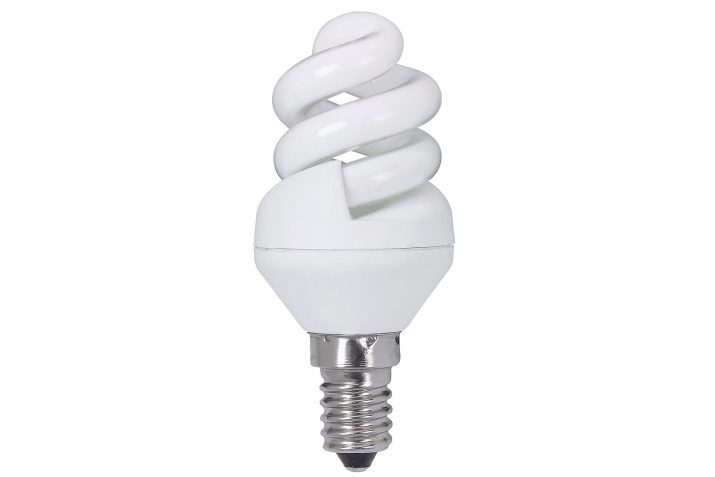
LED
These light sources are composed of many LEDs. At the same time, the luminous efficiency is several times higher than that of other types of lamps. They have a fairly long service life.
But at the same time, LED lamps can negatively affect the human visual organs, since they have too bright white light. Often these sources are used to create interesting modern indoor design options.
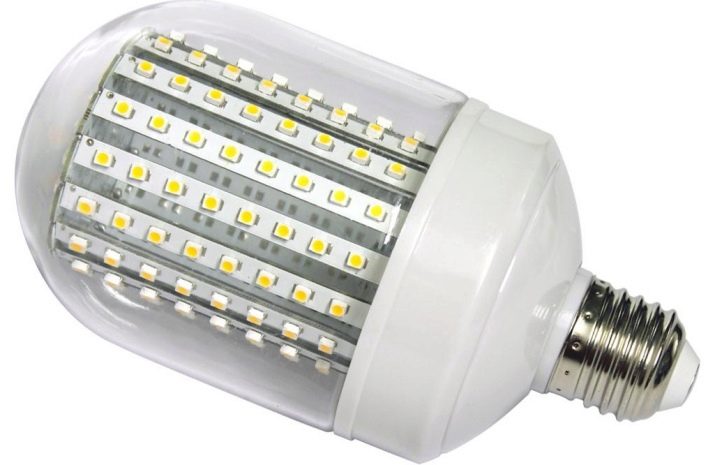
Varieties of lamps
Luminaires are classified according to the type of installation in the washroom.
Wall mounted
This option can be used both as the main lighting and as an additional one. Most often, wall light sources are mounted when the ceiling height is too low. Such elements should be selected depending on the material of the wall coverings and their width.

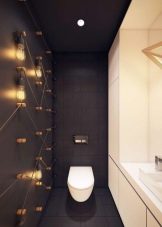
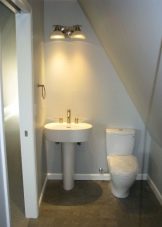
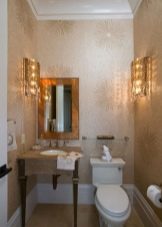
For concrete walls, relatively large classic shades can be an excellent option.
If the width of the coatings is quite small, then you can place the LED strip along it. For plastic-clad walls, placing multiple bright point lights is a great option.
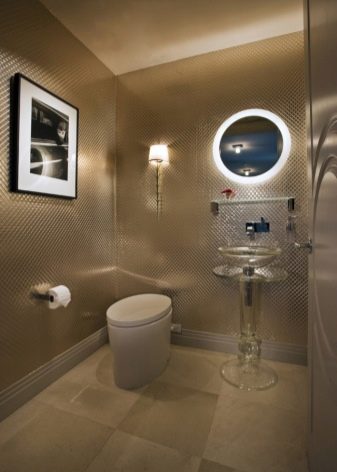
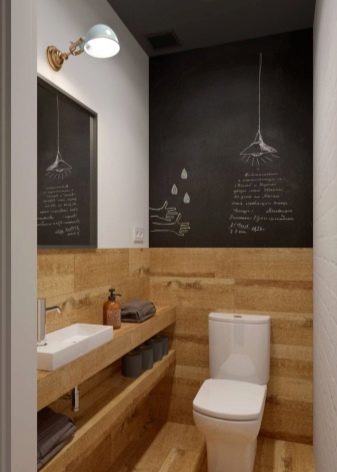
Ceiling
This option is considered the most universal and standard. It is great for a small washroom. But at the same time, it is necessary to understand at what level the ceiling is located in the room. And you should also take into account the material from which it is made.
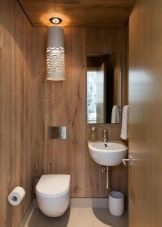
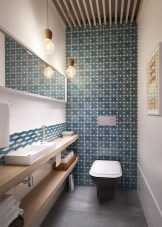
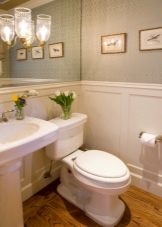
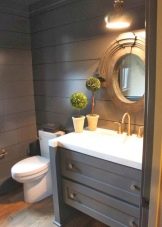
Floor
Most often, this option is used by designers when creating an unusual design for a toilet room. Installation of floor lighting involves mandatory additional lighting. To do this, install several wall spotlights or a long LED strip.
Such original lighting is most often used as a decorative element. To create such a lighting system, point sources are installed, they are mounted in the floor covering.
Luminaires with a motion sensor and an automatic switch-on function can be distinguished into a separate group. Such options are considered the most modern and convenient in the process of use.
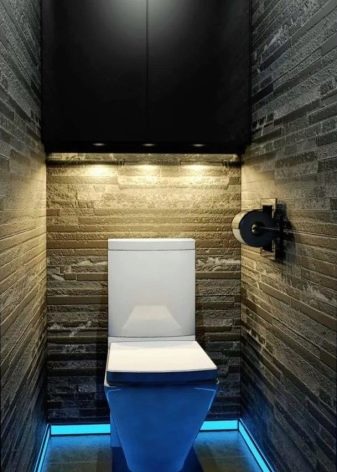
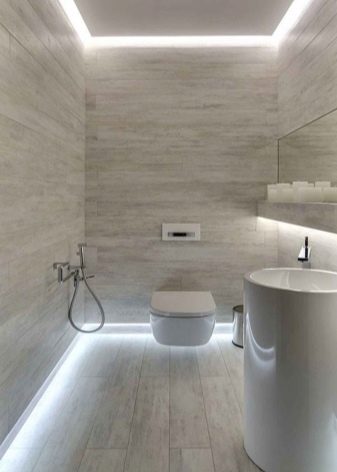
Organization of lighting
When decorating a bathroom, all light sources should be correctly placed. The standard option can be the location of 2-4 spotlights on the ceiling... In this case, it is not necessary to mount additional elements.
Another option would be to place several point light sources in the toilet around the entire perimeter of the bathroom. At the same time, in the central part, you can not install the brightest main lamp. As additional lighting, you can use sconces on the wall.
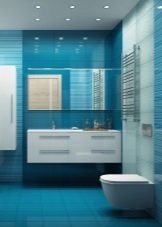
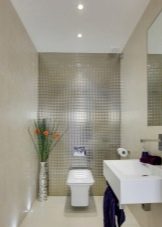
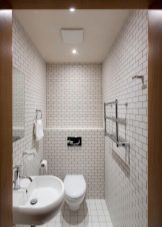
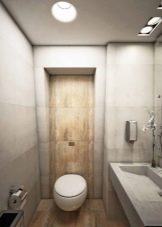
An interesting and effective option will be a design with a central lamp on the ceiling.
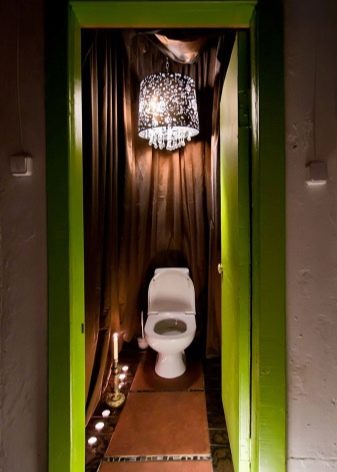
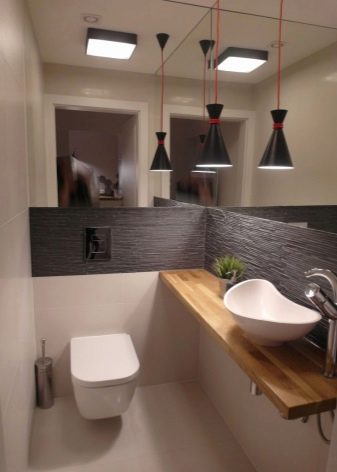
At the same time, additional night illumination with the same type of glow or a different color can be made on the floor.
When decorating a washroom, it can be placed on the ceiling a pair of bright LED or energy-saving lamps of rectangular or square shape. In this case, auxiliary lighting can be omitted, since such sources have the brightest possible glow, which is enough even for a large bathroom.
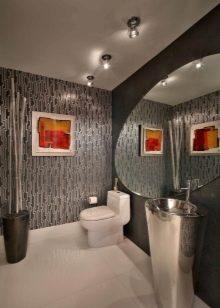
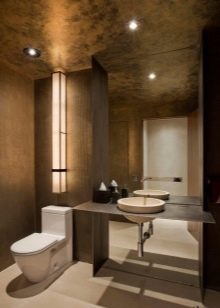
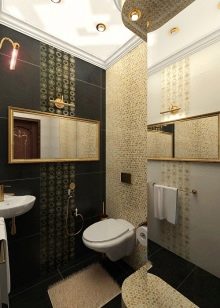
When creating the interior of the combined bathroom, you can also place several basic bright spotlights. At the same time, it is permissible to install several more massive light sources above the bathtub and above mirrored surfaces. But with this option, it is important not to overload the design with such details, so as not to make the lighting too bright.

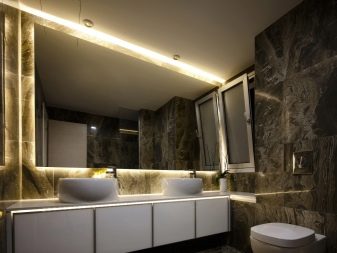
The variant of placement with several small ceiling spotlights and auxiliary lighting will become original, located above the door. Some designers only install LED strips on ceiling and floor coverings.
Automation
For small washrooms, the best option would be the location of 3-5 point light sources. After selecting the backlight level (wall, floor or ceiling) and suitable main luminaires you should think about organizing automatic lighting in the bathroom.
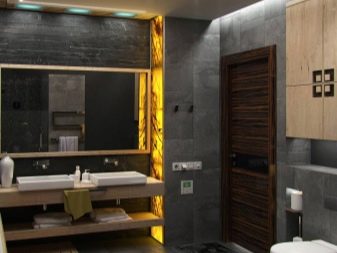
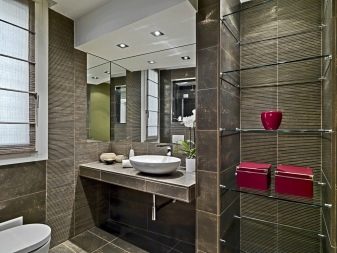
Automation makes it possible to significantly save consumed electrical energy.
In addition, this lighting arrangement is different. the most simple operating technology. Such systems are based on motion sensors, do not have switches, the light turns on automatically.
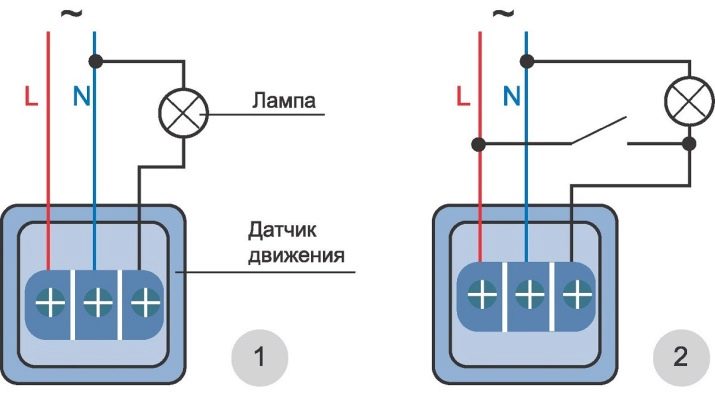
Design Tips
If your bathroom is too small, then the best option would be to organize ceiling lighting without using auxiliary light sources. This option will be able to visually expand the space of the room.
Lighting can be done in small washrooms with the help of many small identical diodes. But this option can only work if there are stretch ceilings in the room.
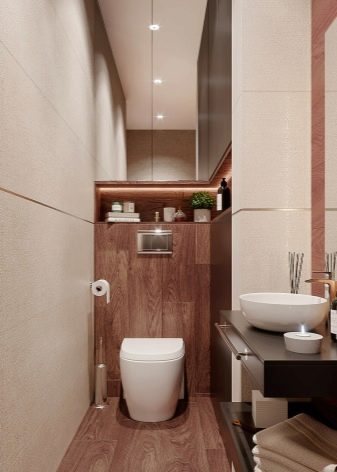
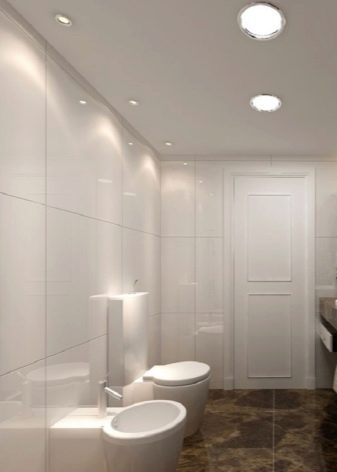
If the ceiling covering in your washroom is made of moisture-resistant plasterboard or high-quality plastic, then it is better to use built-in spotlights. For concrete surfaces, it is recommended to select light elements in shades.
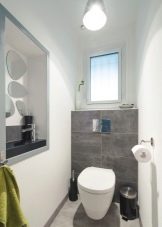
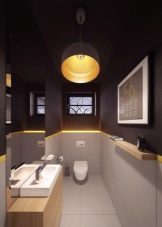
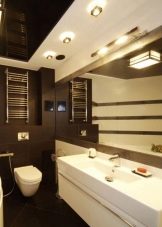
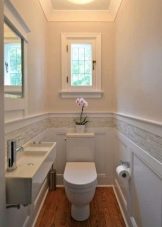
If your washroom has high ceilings (from three meters), then pendant luminaire models should be installed in them. They are able to visually slightly lower the level of ceilings, making the design as harmonious and light as possible. Ceiling luminaire models are not worth choosing.
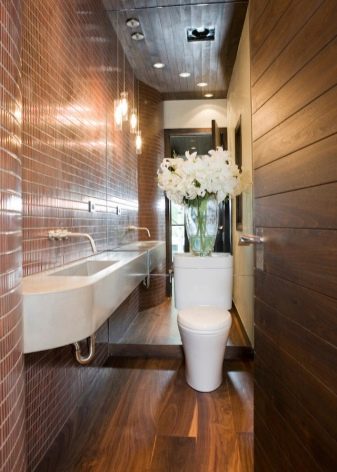
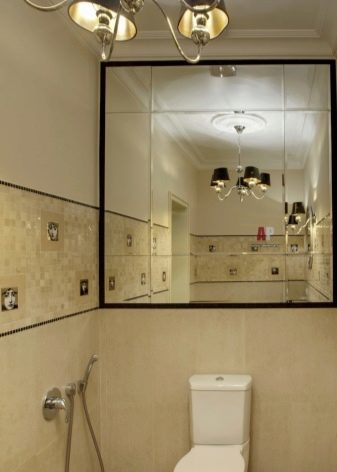
If you want to install a central main chandelier in your washroom, be sure to consider the height of the ceilings. For low rooms, large suspended structures should not be selected. They can spoil the overall design of the bathroom, making it even more miniature.
For rooms with low ceilings, small ceiling chandeliers with a bright glow can be perfect. In this case, you do not need to use additional equipment.
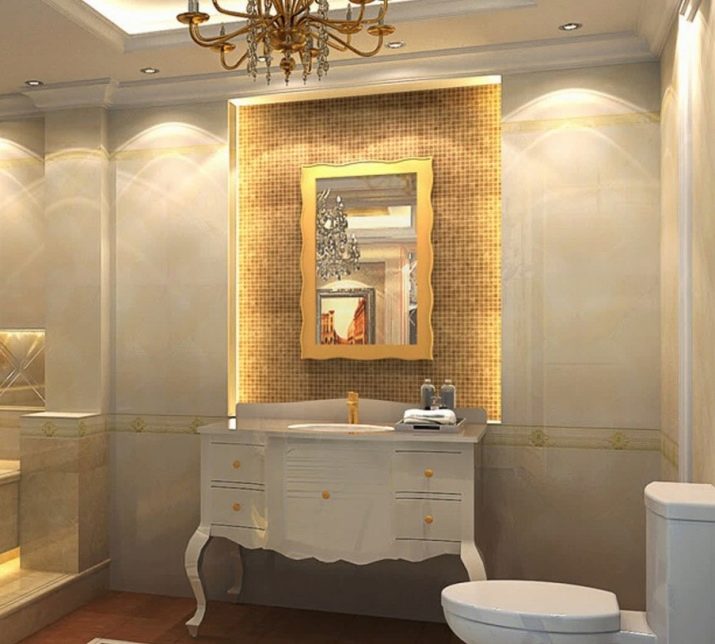
For the same bathrooms, spots can also be suitable. These luminaires are several separate medium-sized lampshades that are firmly fixed on a single metal or plastic frame. Each shade can be rotated by changing its direction.
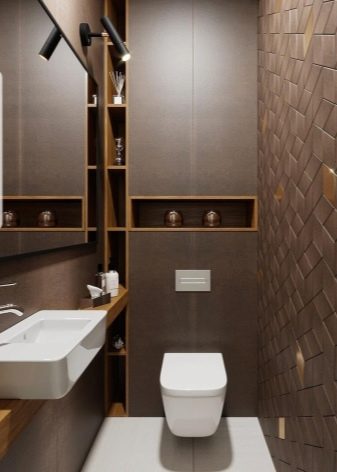
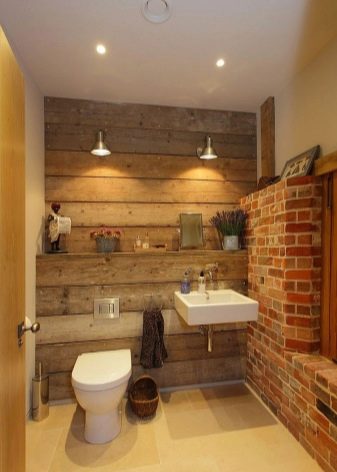
If you have a combined bathroom, then you can do zoning with lighting. Most often, separate pendant lamps highlight the area above the bathroom, above the toilet and above the main mirror. But this option is best done in large bathrooms.
Often, zoning is done using spots. To do this, simply turn each of the shades towards the area you want to highlight. Often in large bathrooms, a couple of spots are placed opposite each other. The presence of auxiliary wall sources and lights is optional. This option will look most advantageous in modern styles of bathroom design.
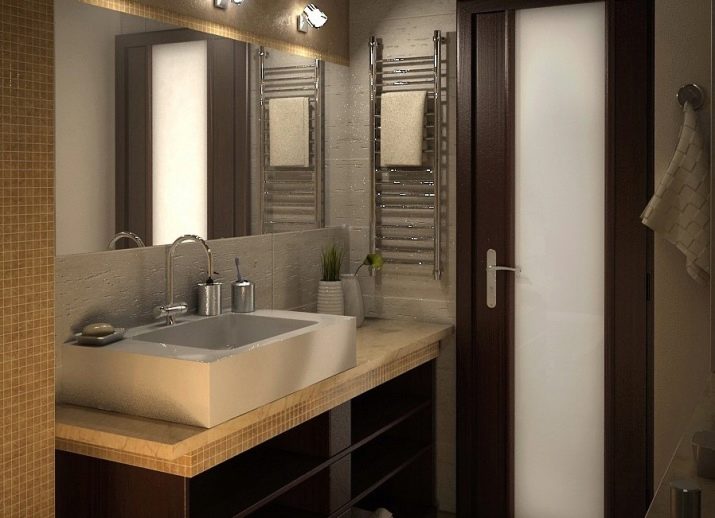
If you want to use lighting as a decorative element, then it is better to make floor lighting.
Often with the help of such a detail highlight steps, pedestals or skirting boards in a room... In this case, you can select options for a wide variety of colors (blue, purple, green). To make the design even more interesting, many separate lanterns are used, of which one design is combined, or a series of portholes are installed.
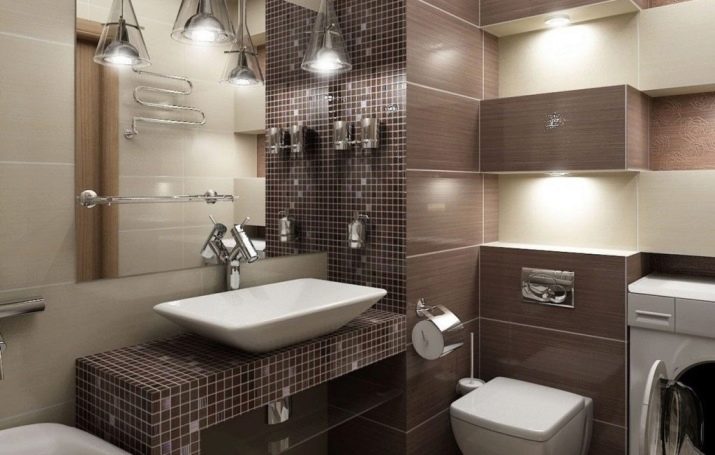
When decorating washrooms in bright and catchy colors lighting fixtures should act as unusual accents. In such cases, lamps of original shapes in bright colors can be an excellent option.
For modern, minimalist styles, simple built-in point sources with a solid shade can work.
How to make the right lighting in the bathroom and toilet, see below.








